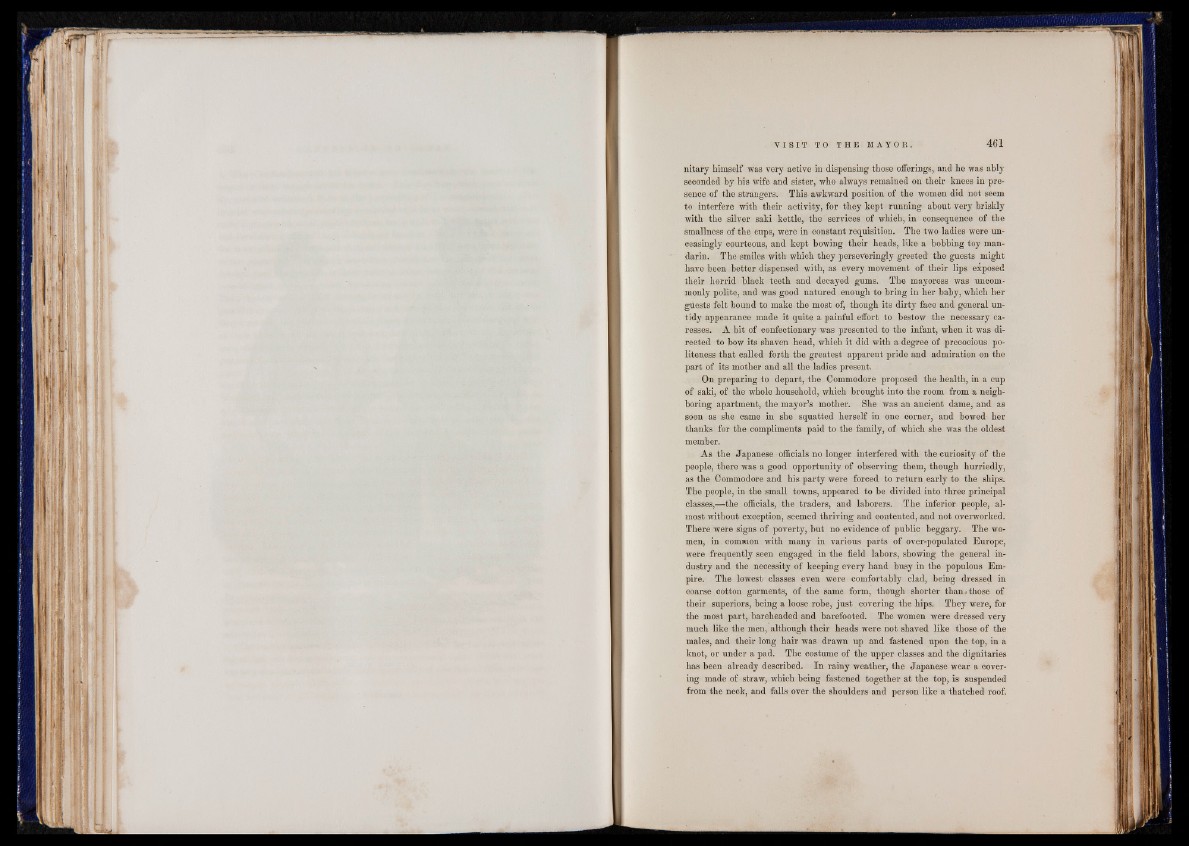
nitary himself was very active in dispensing those offerings, and he was ably
seconded by his wife and sister, who always remained on their knees in presence
of the strangers. This awkward position of the women did not seem
to interfere with their activity, for they kept running about very briskly
with the silver saki kettle, the services of which, in consequence of the
smallness of the cups, were in constant requisition. The two ladies were unceasingly
courteous, and kept bowing their heads, like a bobbing toy mandarin.
The smiles with which they perseVeringly greeted' the guests might
have been better dispensed with, as every movement of their lips exposed
their horrid black teeth and decayed gums. The mayoress was uncommonly
polite, and was good natured enough to bring in her baby, which her
guests felt bound to make the most of, though its dirty face and general untidy
appearance made it quite a painfiil effort to bestow the necessary caresses.
A bit of confectionary was presented to the infant, when it was directed
to bow its shaven head, which it did with a degree of precocious politeness
that called forth the greatest apparent pride and admiration on the
part of its mother and all the ladies present.
On preparing to depart, the Commodore proposed the health, in a cup
of saki, of the whole household, which brought into the room from a neighboring
apartment, the mayor’s mother. She was an ancient dame, and as
soon as she came in she squatted herself in one corner, and bowed- her
thanks for the compliments paid to the family, of which she was the oldest
member.
As the Japanese officials no longer interfered with the curiosity of the
people, there was a good opportunity of observing them, though hurriedly,
as the Commodore and his party were forced to return early to the ships.
The people, in the small towns, appeared to be divided into three principal
classes,—the officials, the traders, and laborers. The inferior people, almost
without exception, seemed thriving and contented, and not overworked.
There were signs of poverty, but no evidence of public beggary. The women,
in common with many in various parts of over-populated Europe,
were frequently seen engaged in the field labors, showing the general industry
and the necessity of keeping every hand busy in the populous Empire.
The lowest classes even were comfortably clad, being dressed in
coarse cotton garments, of the same form, though shorter than/those of
their superiors, being a loose robe, just covering the hips. They were, for
the most part, bareheaded and barefooted. The women were dressed very
much like the men, although their heads were not shaved like those of the
males, and their long hair was drawn up and fastened upon the top, in a
knot, or under a pad. The costume of the upper classes and the dignitaries
has been already described. In rainy weather, the Japanese wear a covering
made of straw, which being fastened together at the top, is suspended
from the neck, and falls over the shoulders and person like a thatched roof.